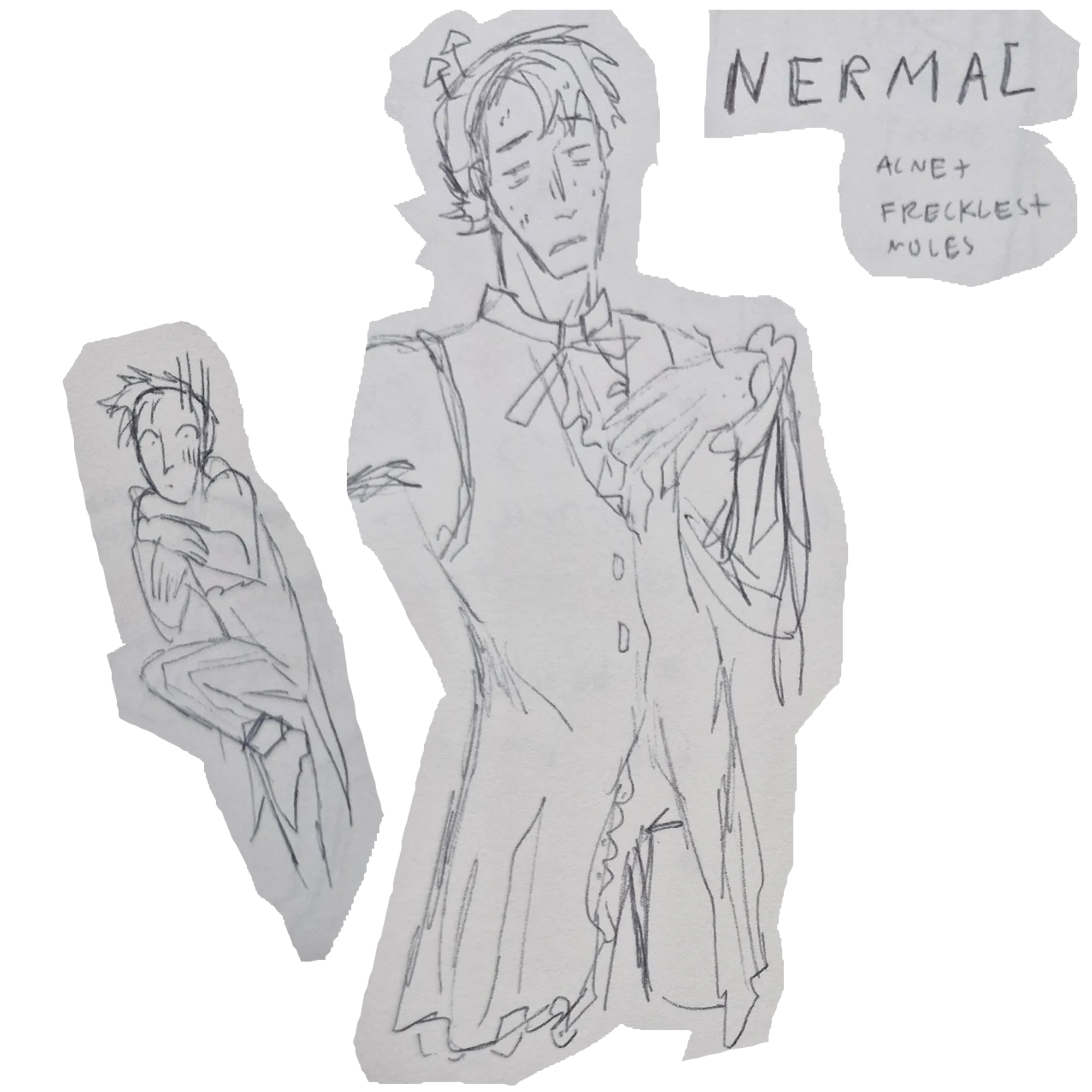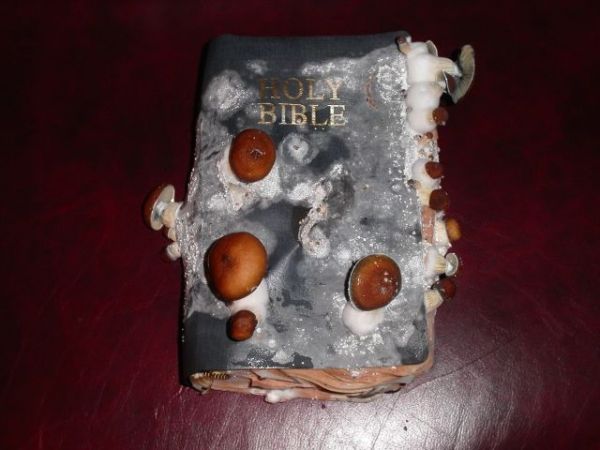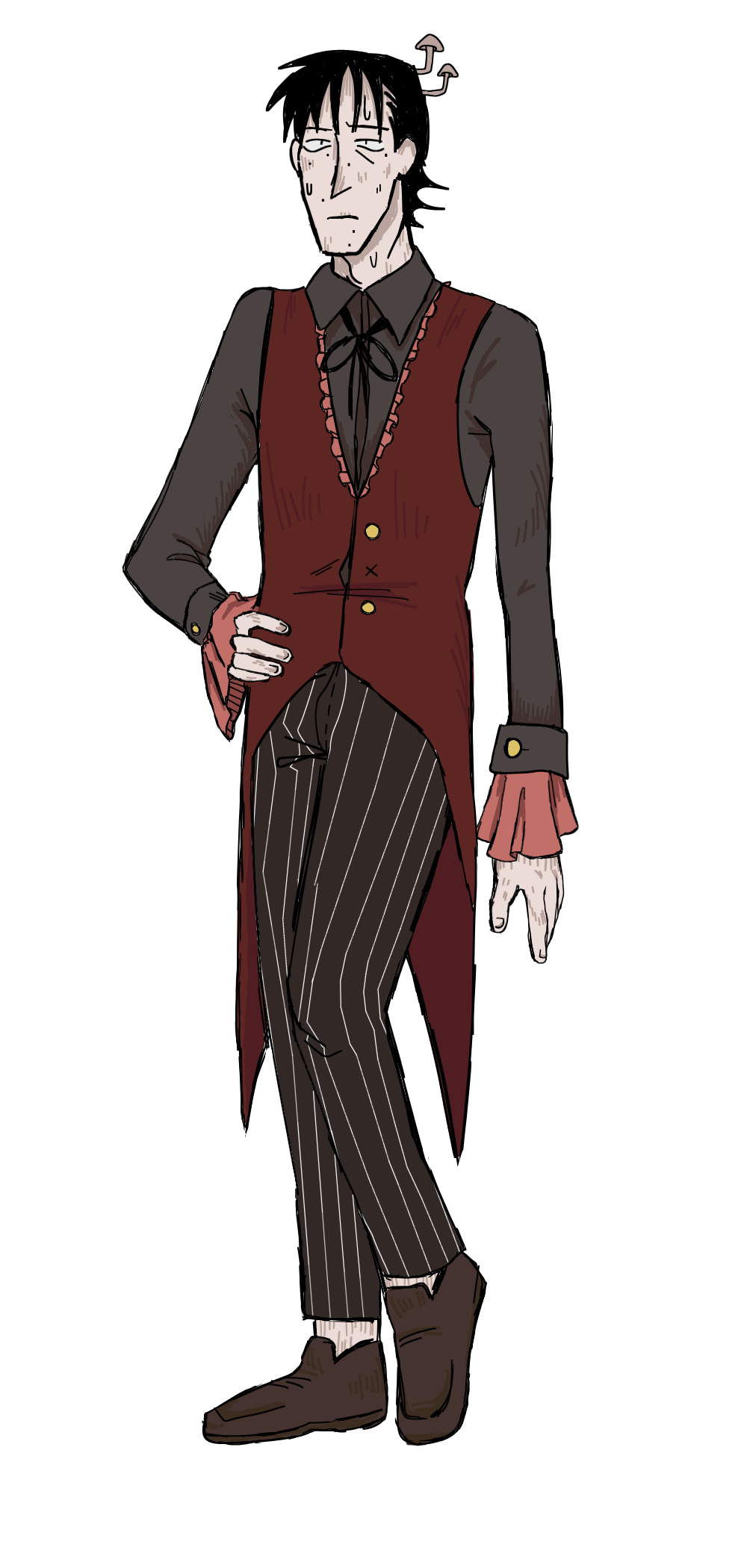Nermal is the collective consciousness of a mutated radiophage mushroom colony. He roams the wastes, stalking behind branches, peeking, dragging his gangly form trough the land. There is always dirt under his nails and bags under his eyes.
He lives deep in an isolated part of a ghost town where the radiation is very high and few venture inside. Nermal's lair is within a long abandoned mansion – the haunted kind. All sorts of plants and fungi and lichen have since grown and currently populate the place.
In the center of his home, Nermal has built himself a makeshift throne off of the trunk of a rotting tree.




 RIGHTFULLY AWESOME MOLD KING PLAYLIST:
RIGHTFULLY AWESOME MOLD KING PLAYLIST:
